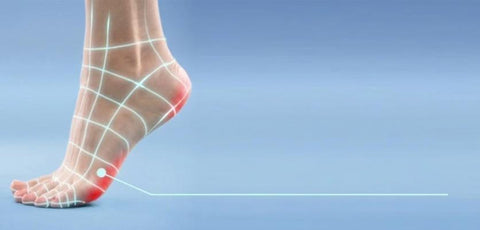
Thickened hard skin on parts of the feet serves a protective function.1 However, this hard thickened skin may be the cause of symptoms when extensive.1 It may also be considered unsightly. Fortunately, there are easy ways to remove hard skin at home—read on for our helpful tips to keep your feet smooth and nourished.
Hard skin on your feet occurs when the outer layer of skin becomes thick and hardened—this is your skin’s way of protecting itself from friction (rubbing) and pressure, such as from your shoes.1,2 Hard skin typically looks like an area of thick, hardened skin on your foot.2
Areas of hard skin are most common on the parts of your feet that get exposed to the most friction and pressure—the ball of the foot, under the big toe, the rim of the heel, and on the toes (especially the little toe).1,2
With continued friction and pressure, these areas of thick, hard skin can develop into a callus or corn.3 A callus is usually larger and occurs on the bottom or side of the foot; a corn is usually smaller, has a central core, and occurs on or between toes.1,2 A callus may appear yellow or brown in colour4 with undefined edges,1 while a corn may appear white2 with a central core and more obvious edges.1
When friction and pressure on your feet increase, more skin cells are produced to form a thick, hardened layer on the surface.1
Unfortunately, these areas of hard skin can in turn increase the pressure and friction from shoes, which can then worsen the hard skin.1,3
Factors that can contribute to increased pressure and friction on the skin of your feet include:2,3
The best way to manage hard skin is to remove the cause of friction and pressure1,2—this involves both making changes to your footwear and removing the hard skin on your feet.5
To reduce friction and pressure from your footwear, you can try:
To remove hard skin from your feet quickly, you can try:
If your hard skin becomes painful, or you have any concerns about a callus or corn, you should see your GP or podiatrist.
To help prevent hard skin from forming on your feet, try the following:
A simple maintenance routine can help look after the skin on your feet, this may include:8,9